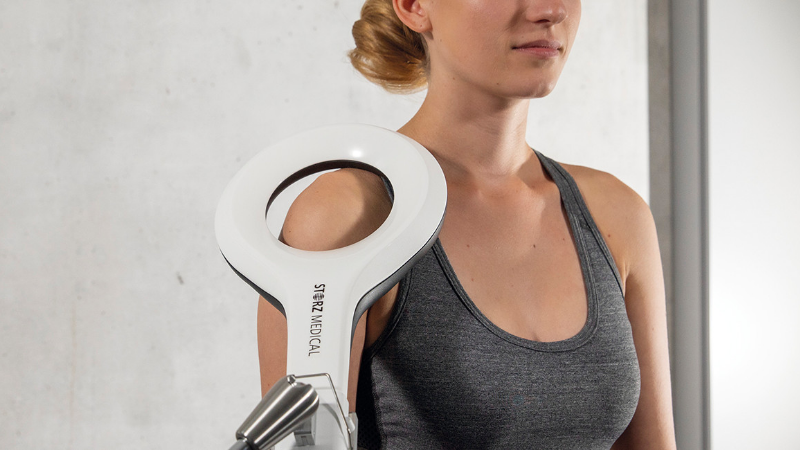EMTT therapy has emerged as a game-changer in pain management, using electromagnetic fields to stimulate cellular repair and reduce inflammation. More healthcare providers are adding this non-invasive solution to their treatment arsenals every month. Vale Medical offers top-tier EMTT machines that deliver consistent results for practices of all sizes.
But here’s the million-dollar question: should you buy one outright or lease it instead? The right answer isn’t the same for everyone—it depends on your practice’s unique financial situation, patient volume, and growth plans.
What is EMTT Technology?
Electromagnetic Transduction Therapy works by delivering high-energy magnetic pulses that penetrate deep into tissue, triggering the body’s natural healing responses. Unlike its cousins ESWT (shockwave) and PEMF (pulsed electromagnetic fields), EMTT reaches deeper tissues—up to 18 cm beneath the skin—making it ideal for treating stubborn joint pain, herniated discs, and even bone conditions.
Patients with chronic back pain, sports injuries, arthritis, and tendonitis often find relief after just a few sessions. Modern EMTT machines come with precise targeting capabilities, adjustable intensity settings, and treatment protocols for dozens of common conditions. The technology has evolved considerably in recent years, with Vale Medical’s models featuring intuitive touchscreen interfaces and cloud-based patient tracking that older machines simply can’t match.
Option 1: Purchasing an EMTT Machine
Buying an EMTT machine outright means paying more upfront but owning a valuable asset that keeps generating income without monthly payments after the initial investment. Many practice owners don’t realize they can deduct the full purchase price in the first year under Section 179 of the tax code (though checking with an accountant is always smart).
Owning the equipment means complete scheduling freedom—no limitations on patient volume or session duration that sometimes come with lease agreements. A busy orthopedic practice treating 15 EMTT patients weekly at $150 per session could generate over $117,000 annually, potentially covering the machine’s cost in under two years.
The maintenance aspect deserves attention too. Vale Medical includes a three-year warranty with new purchases, covering parts and labor. After that, annual maintenance costs typically run around $2,500—something to budget for, but far less than ongoing lease payments.
Option 2: Leasing an EMTT Machine
Leasing requires a much smaller initial payment—typically just the first and last month’s lease fees—preserving cash flow for other practice needs. Monthly payments usually range from $1,800-$3,000 depending on the model and lease terms.
Technology moves fast, and leasing offers the chance to upgrade to newer models every 3-5 years without worrying about selling outdated equipment. Many Vale Medical lease agreements include maintenance packages, eliminating unexpected repair bills. Some practices find that the predictable monthly expense makes budgeting simpler, especially when balanced against insurance reimbursements. Plus, lease payments are typically 100% tax-deductible as business expenses.
The “try before you buy” aspect appeals to many healthcare providers. Starting with a lease lets you gauge patient demand and treatment effectiveness before committing to ownership. Several Vale Medical customers began with leases and converted to purchases after seeing strong patient results and revenue growth.
Financial Considerations
Looking at a 5-year window, purchasing typically becomes more economical once a practice exceeds about 10 EMTT treatments weekly. A mid-range machine costing $85,000 works out to approximately $1,450 monthly over five years (ignoring interest but including maintenance), while comparable leases often exceed $2,000 monthly.
Cash flow impacts differ dramatically between options. Purchasing creates a large initial dip but potentially higher long-term profitability, while leasing creates a steady, predictable expense stream.
Watch out for lease clauses that limit treatment sessions, charge usage fees above certain thresholds, or include complicated end-of-term conditions. Some agreements make “returning” the equipment surprisingly expensive or automatically convert to month-to-month terms at higher rates.
Practice-Specific Factors to Consider
The right choice depends partly on patient demographics. Practices serving athletes or workers’ compensation cases often see higher EMTT utilization than general family practices. Vale Medical representatives can help analyze local competition and potential demand.
Physical space matters too—most EMTT units require at least 80 square feet, plus appropriate electrical connections and sometimes special cooling considerations. Staff training needs vary by model, though Vale Medical includes comprehensive training with both purchase and lease options.
Consider how EMTT treatments will fit into your existing workflow. Some practices dedicate specific days to EMTT therapy, while others integrate sessions between other appointments. Either approach works, but scheduling impacts equipment utilization and return on investment.
Key Questions Before Making a Decision
Before deciding, ask potential providers about maintenance response times, software update policies, and whether supplies are proprietary or generic. Request references from practices similar to yours, and ask those references candidly about their experience.
Red flags include unusually high lease rates, vague maintenance terms, and providers unwilling to share detailed specifications. Quality after-sales support proves just as important as the machine itself, regardless of how you acquire it.
Vale Medical offers comprehensive consultations to compare both options based on your specific situation, taking into account patient volume, specialization, and financial considerations. Their team can project potential returns under different scenarios.
Choosing between leasing and purchasing an EMTT machine represents a significant business decision that affects years of practice operations. The “right” answer varies widely between practices based on treatment volume, cash position, and growth plans. Both approaches can work wonderfully when aligned with your practice’s unique needs. Vale Medical’s consultants can help analyze your specific situation to determine the optimal acquisition method. Whichever path you choose, investing in quality EMTT technology translates directly to better patient outcomes and practice growth.








Leave a Reply